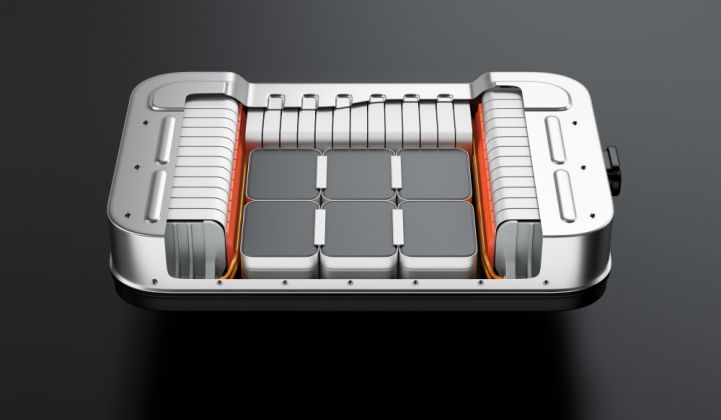Interest in cell manufacturing is soaring as European automakers lay out ambitious plans for electric vehicles. Europe’s share of global lithium-ion battery cell manufacturing is set to grow from 6 percent last year to 35 percent in 2026, new figures show. Wood Mackenzie Power & Renewables forecasts that the Europe, Middle East and Africa (EMEA) region will account for almost 228 gigawatt-hours of lithium-ion cell manufacturing capacity a year by 2026, out of a total of around 649 gigawatt-hours worldwide. The EMEA figure, which almost completely relates to capacity in Europe, compares to a forecast of nearly 345 gigawatt-hours of cell manufacturing capacity in Asia-Pacific and less than 66 gigawatt-hours across the entirety of the Americas.
Last year, EMEA had less than 12 gigawatt-hours of lithium-ion cell manufacturing capacity, far behind Asia-Pacific with almost 144 gigawatt-hours, and even behind the Americas, with more than 31 gigawatt-hours. EMEA’s manufacturing capacity is set to see an average year-over-year growth rate of 72 percent up to 2026, Wood Mackenzie predicts. EVs drive production Interest in cell manufacturing is soaring as European automakers such as Jaguar Land Rover lay out ambitious plans for electric vehicles and the region leads the way in phasing out internal combustion engines. The forecast growth of the cell manufacturing market in Europe may well end up being an underestimate, Rory McCarthy, senior analyst at Wood Mackenzie, told GTM. New initiatives are being announced on a regular basis. This month, for example, President Macron of France unveiled plans to invest €700 million ($790 million) into French cell manufacturing for Europe’s electric vehicle industry. McCarthy said the announcement came after Wood Mackenzie issued its forecast, which illustrates how fast the market is moving. Less than four months ago, Wood Mackenzie was expecting European battery manufacturing capacity to hit 90 […]
Click here to view original web page at www.greentechmedia.com

